23 Abandoned Places In TEXAS (Scary, Quiet, and Creepy)
When you watch a horror movie, and the scene of an abandoned place appears on the screen, alarm bells go off in your head.
You shout at the characters: no, stay out of there!
It is always annoying when they go in anyway.
What makes abandoned places so irresistible?
Is it the thrill of exploring, a display of bravery, or something sinister like ghosts looking for new souls to torment?
Texas is home to the best-abandoned places.
People say that these cold and creepy places have ghosts in them.
If you want to explore some alluring; yet spine-chilling abandoned places in Texas for the thrill or to display bravery, hopefully not because of beckoning ghosts, this guide seeks to point you in the right direction.
And by the way, you may also want to check out some of the popular Ghost Towns in Texas.
Abandoned Places In Dallas, Texas
1. The Tri-City Hospital (Haunted Medical History)
When you walk into a hospital, there are characteristics you will immediately notice: the overpowering antiseptic smell, health professionals like nurses and doctors moving to and fro the halls, visitors in the waiting room either hoping to see a loved one or waiting to be attended to by a doctor, and the occasional emergency patients wheeled in on a stretcher.
The sickness, death, tragedies, and emergencies take the front lines in your mind and make you want to leave immediately.
Nonetheless, while hospitals are indeed places of sickness and death, hospitals are also places of hope, health, and new life.
We can not say the same thing about the Tri-City hospital.
Although it once served the residents of Dallas, it now looks like a hell house on the outside.
This hospital is four stories and 109,000 square feet; it was built in 1957 and used for several years before authorities enforced its closure in the early 2000s.
The hospital contains an emergency room, a psychiatric ward, a surgery room, and over 120 patient rooms.
This lifeless hospital makes you wonder if the ghosts of past patients still lurk within its walls or perhaps if the voices heard by patients in the psychiatric wards are still very much present.
While we will not recommend you visit at night unless you are super daring, the Tri-City Hospital is a place you should visit if you wish to explore abandoned places in Dallas, Texas.
Address: 7525 Scyene Road, Dallas, Texas
2. Knox-Henderson Subway Station (Unfinished Underground Mystery)
The Knox-Henderson subway station is an excavated hole 80 feet (24 m) below North Central Expressway (United States 75) at Willis Avenue.
It all started in the 1990s with a plan by the City of Dallas and DART (Dallas Area Rapid Transit) to build a subway station to serve the residents of the Knox-Henderson neighborhood.
Sadly, construction stopped because homeowners in the area did not want excavations done underneath their homes.
The City of Dallas heeded their complaints and built other subway stations nearby.
Their stance changed in the mid-1990s when they petitioned DART to construct the station.
DART would be all too happy to complete the Knox-Henderson station.
However, the financial cost required for completion is a lot, so the ‘ghost station’ will be abandoned indefinitely.
Address: Located beneath the North Central Expressway (United States 75) at Willis Avenue.
3. The Oak Cliff Methodist Church (Century-Old Church’s Desolation)
Some of the oldest standing buildings in Texas are churches, like the San Fernando Church, completed between 1738 and 1750.
The majority of the other church buildings came much later.
Although built in 1914, the Oak Cliff Methodist Church started as a small congregation of two families in 1887 who met in the home of the Shelton family.
The first church erected in 1894 made way for a new one constructed in 1915 and still stands today.
It was designated a historic landmark by the City of Dallas in 2004 and made a Recorded Texas Historic Landmark in 1999.
A long history of perseverance is evident because it still stands after issues resulting from a lack of funding in the 1900s and a devastating fire in 1958.
Regrettably, in 2015, the church was closed and has not reopened ever since.
An inspection of the interior of the structure will reveal some graffiti, roof leaks, vandalism, and squatters.
Irrespective of this, the desolate yet undeniably beautiful structure stands in 2023, precisely 109 years later.
Address: 549 E Jefferson Boulevard, Dallas, Texas
Also see our article on Haunted Houses in Texas.
Abandoned Places In Amarillo, Texas
1. The Herring Hotel (Amarillo’s Oil Boom Luxury)
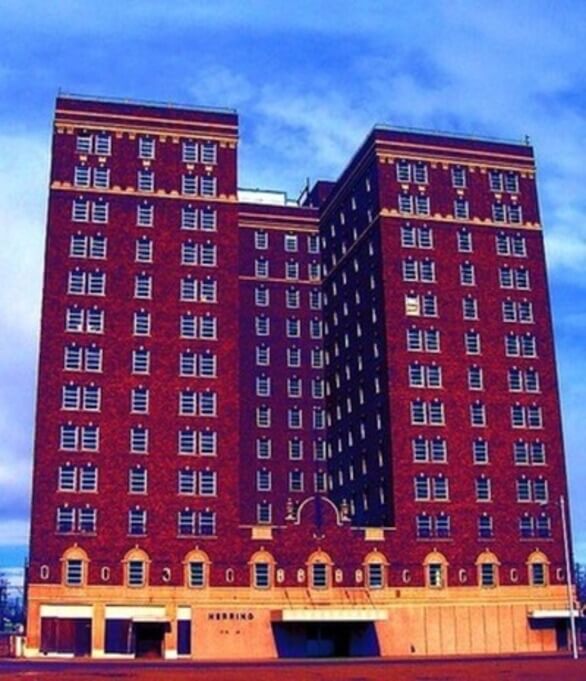
The Herring is a beautifully aging structure in Amarillo.
Constructed in 1927 by Cornelius Taylor Herring, a pioneer cattleman, oilman, and banker, it was one of the three oil-boom-era hotels built which outshined all others with the luxuries, grandeur, and class it displayed.
Travelers, town elites, and locals wished to lodge at the Herring and enjoy all it offered.
The Herring boasted amenities such as a swimming pool, a rooftop garden, and a ballroom.
People stared at the Herring in awe because it was the tallest building in Amarillo, a place of business and pleasure as intended by the owner.
It would seem all good things come to an end.
The Herring was eventually closed in 1977 and became a government office space.
In 1978, it shut down again and has remained so.
The grand and looming structure of the Herring is fascinating to visitors and explorers.
Address: 311 SE 3rd Ave, Amarillo, TX 79101, USA
2. The Ranchotel (Motor Court Route 66 Relic)

A description of the Ranchotel would not be complete without mentioning Route 66, a historic highway from Chicago to Santa Monica, California.
The route was for travelers migrating from the West, especially in the 1930s.
Travelers would take little breaks from their journey by lodging in hotels or camping on the side of the road.
The popularity of Amarillo with travelers prompted the City to build a tourist camp with bathing and cooking facilities.
In effect, individuals began to build privately owned motor courts and campsites for Route 66 travelers.
One such motor court is the Ranchotel, constructed in 1940.
It remains one of Amarillo’s most iconic landmarks.
Ranching was a predominant tradition in the region at the time; this was evident in the architecture of this structure.
The Ranchotel lived up to its name; the walls covered in stucco, the chimneys, the wooden windows, and the wooden shutters all as a reminder of the passage of time.
Unfortunately, it fell to disuse, was sold, and converted into an apartment building in 1952 when Route 66 moved from Sixth Avenue to Amarillo Boulevard.
The Ranchotel was listed in the National Register of Historic Places in 1995 because its unique architectural style was retained, even after several renovations.
Address: 2501 6th Ave, Amarillo, TX 79106, United States
3. The Santa Fe Depot (Historic Rail Hub Remnant)
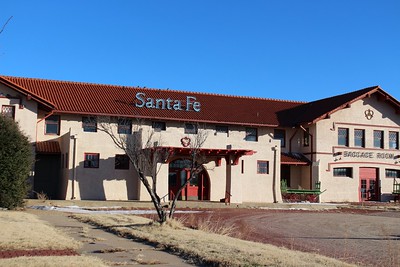
The Santa Fe Depot was built in 1910 and was a hub for travelers and freights from Chicago, the Grand Canyon, and San Francisco.
It is rather peculiar because it contains most of its original structures and amenities.
To this day, it boasts of the original ticket counters, the antique cash drawers, the sound system, and the scale used to weigh freights brought in.
Special does not begin to describe the Santa Fe Depot because it contains the history of two different facilities.
The upstairs of the Santa Fe Depot is the Harvey House Restaurant and Hotel.
It was the most prestigious restaurant and served wealthy people in the country.
Other facilities in this beautiful place include a ballroom, community shower, and bathing rooms; for travelers who were passing through.
If you need an adventure and want to see some antiques, this is the perfect spot to visit.
Address: 401 S Grant St, Amarillo, TX 79101, United States
4. The Triangle Motel (Route 66 Motor Court)
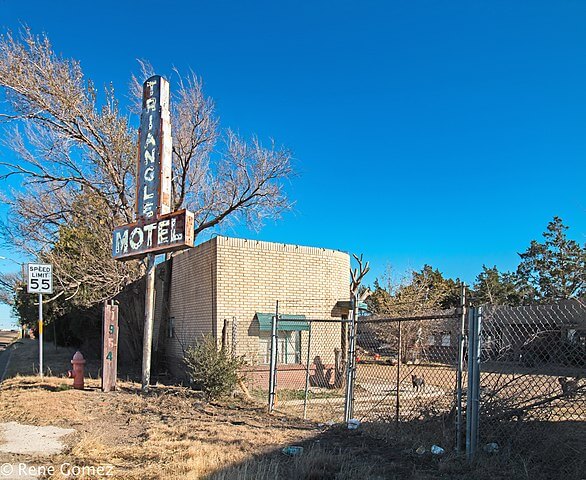
Like the Ranchotel, the Triangle Motel was a motor court along Route 66.
Wedged between Route 66 and US 60, the hotel office was at the center, with the rooms faced inwards with garages attached to the rooms, an amenity particular to motor courts at that time.
Apart from the main court building, there was also a Triangle Motel Cafe, a Gas Station, and a service garage.
This facility first opened in the 1940s and was sold off in 1977.
Following the sale, it was neglected and would soon fall into disrepair.
It has sat vacant for decades.
The once bustling motor court is nothing but a run-down wasteland.
Efforts are in progress to repair and restore the motel.
Although this process has experienced some delays, one can only hope for the best.
The old Route 66 is a good option when exploring.
Make sure to check out the Triangle Motel on your way.
Address: 7954 E Amarillo Blvd, Amarillo, TX 79107, United States
Also see our article on Escape Rooms in Texas.
Abandoned Places In Austin, Texas
1. Aqua Thrill Way Water Park (Thrilling Yet Tragic Past)
The water park opened in 1978 and soon became a favorite of residents of Austin, so much so that it was called the wave of high-speed thrill.
Water parks were new to Austin, so people trooped in to experience the thrill of trying something new.
Built across a hill above Boggy Creek, the concrete slides were the cause of many concussions, bruises, and cuts suffered by patrons because of the thrill curve, a sharp and dangerous angle on the concrete slide.
The excitement of coming down the slide made patrons trudge up the hill, bruises and all.
A pool was at the bottom of the slide.
Patrons would splash about with happy smiles on their faces.
Apart from bruises and concussions, the park recorded some deaths and drownings.
There are records of countless lawsuits against the park for injuries suffered by patrons.
The water park had been shut down and reopened severally.
It was closed in the mid-80s for scheduled maintenance and never reopened.
Some of the original structures are still in place; the concrete slide covered in graffiti, the crumbling pump house used to suction water, and the pool filled with debris.
Several thrill seekers still visit the park.
Address: Off Access Road of Interstate 35
2. The Coxville zoo (From Gas Station to Zoo)
The legendary Coxville zoo surprisingly did not start as a zoo.
It belonged to the Cox Family, who had purchased a 50-acre plot of land intending to open a gas station and convenience store.
Mr. Alvin Cox had a cute pet monkey he took everywhere, including to work.
He soon noticed that several patrons came in, not just to buy goods but to see and pet his monkey.
An idea to start a zoo came to life.
What, in the beginning, started with a pet would soon expand to include a wide range of animals for patrons to see.
The zoo thrived well for over 20 years.
Visitors from all over the town went to the zoo.
Doomsday came when a highway was constructed in 1957 that would reroute traffic away from the zoo.
Business dwindled for the once thriving zoo.
The Coxville zoo, with some empty cages, is still in Austin today.
Address: 601-655 W Yager Ln, Austin, Texas
3. Austin State School Farm colony (History of Mental Health)
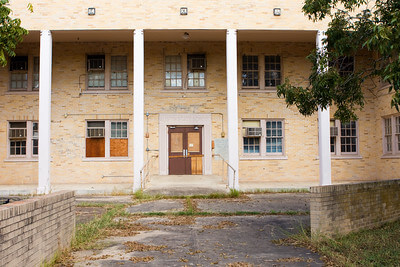
The school farm opened in 1993 to house mentally disabled boys and as a way of avoiding overcrowding in other mental institutions in the area.
It served as the male arm of the Austin State School.
The female school was within the area.
This gender segregation is because of a misguided belief that associates mental disabilities with promiscuity and immorality.
Although the idea was to create a haven for mentally disabled boys, protecting them from the pressures of the outside world, the State soon began to send juvenile offenders there.
The school had a lot of facilities where the boys worked: a swimming pool, a cannery, a cemetery, and a garden.
When the healthcare reform of the 1960s took effect, it canceled the use of labor or farming as treatment.
A series of lawsuits were filed against the Austin State School in 1976 that claimed the school violated the human rights of the students.
It also claimed that students lived under inhuman and deplorable conditions.
The school shut down and reopened as Travis State School.
It was closed after 20 years and has not reopened ever since.
Address: Crockett St, Austin, TX 78724, United States
Also see our article on Neighborhoods in Texas.
Abandoned Places In Houston, Texas
1. The Palace Of The Golden Orbs Temple (Golden Temple’s Silent Decay)
It was also called Chong Hua Sheng Mu Holy Palace.
Construction for this temple began in 1999 and ended in 2001.
A Chinese Taoist leader Kwai Fun Wong built it.
She wanted it to be a place for worshiping while offering daycare and living quarters for other Taoists.
Unfortunately, Ms. Wong was deported to China in 2001 and could not bring this intention to reality.
The structure has a golden orb on top that is 40 feet in diameter.
It looks like the Chich’en Itza temple in Mexico.
What is most intriguing about this beautiful temple is that it has remained closed since 2001.
It has sat at the mercy of the elements since then, slowly deteriorating.
If you are in Houston and are curious to see the structure, you should put this on your list of abandoned places to visit.
Address: 3695 Overture Dr, Houston, TX 77082, United States
2. Hillendahl-Eggling Cemetery (Blue Light Cemetery Mystery)
The word ‘cemetery’ makes you think of a quiet, creepy, and eerie home of the dead.
Hillendahl-Eggling Cemetery is mysterious for several reasons.
First, there is the fact that it has housed both the living and the dead.
Before its use as a cemetery, it served as a home to many German settlers who built houses, churches, and stalls around the area.
Flooding was a constant torment in the area.
The floods wreaked havoc on the homes and businesses of settlers.
They moved to higher ground in early 1890.
This cemetery is all that stands as an indication of that time.
Secondly, there have been reports of satanic worship and vandalism in the cemetery.
Satanists are known to strike fear and dread in the hearts of all who hear of them, especially if the cult carries out its activities in a particular vicinity.
Hillendahl-Eggling Cemetery is called ‘Blue Light Cemetery’ because the headstones of the graves glow a blue hue at night.
Some say this is because the spirits of the dead roam the cemetery, while others believe it to be an aftermath of the Satanic rituals done there.
Brave explorers and ghost hunters have trooped into the cemetery to debunk or confirm these myths.
You are certainly in for an adventure if you choose to explore the cemetery.
Address: Bear Creek to Langham Creek, Houston, TX 77084, USA
3. Reliant Astrodome (Eighth Wonder’s Abandonment)
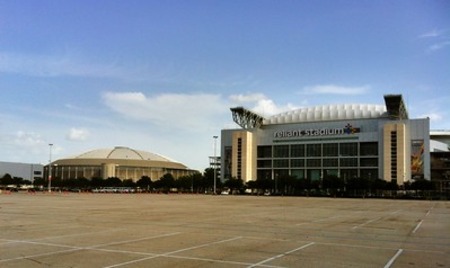
This magnificent yet desolate structure was the first of its kind in the world and had been referred to by some as the Eighth Wonder of the World.
The plan was to ensure a magnitude of interior space intended to host football, baseball, rodeo shows, music concerts, circus shows, and all other events requiring a vast amount of space.
Reliant Astrodome has hosted several notable events; a concert by Selena Quintanilla-Pérez and her band Los Dinos in 1995 and WrestleMania X-Seven in 2001.
Both events pulled the largest crowd since the dome opened.
The management ignored the pressing need for renovations to guarantee the safety of players, visitors, and staff causing several safety code violations.
A scheduled game did not hold because of the unsafe conditions of the field.
It was closed in 2005.
Although briefly reopened for use after Hurricane Katrina, it was closed after a few months.
There have been several suggestions that the City should renovate the dome.
Address: 8400 Kirby Drive, Houston, Texas 77054, United States.
4. The KVVV-TV Station (Broadcasting Silence Since 1968)
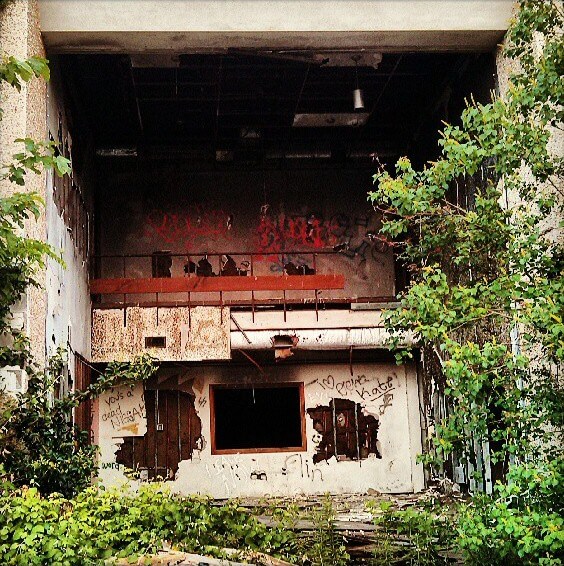
This TV station opened in 1968 and was operational for a year and a half.
It was available to viewers who were residents of Houston and other surrounding areas.
The most common broadcasts were shows like No No the clown and the Stock Market Observer.
Spanish movies and shows were popular on Sundays.
About a year after it became fully operational, the station lost viewers and could not pay some of its staff.
Unfortunately, the station had to reduce its staff.
The owners would eventually record financial losses, causing them to sell the broadcasting equipment and shut the station down completely.
Its buildings were left untouched and slowly decayed.
Although this abandoned TV station has no haunting or creepy past, it is still worth exploring if you ever find yourself in Houston, Texas.
Address: 1400 Lundy Lane in Friendswood, at FM 528, four miles (6 km) north of Alvin, Houston, Texas
Also see our article on Museums in Texas.
Abandoned Places In San Antonio, Texas
1. The Hot Wells Hotel (Luxury Resort Turned Ruins)
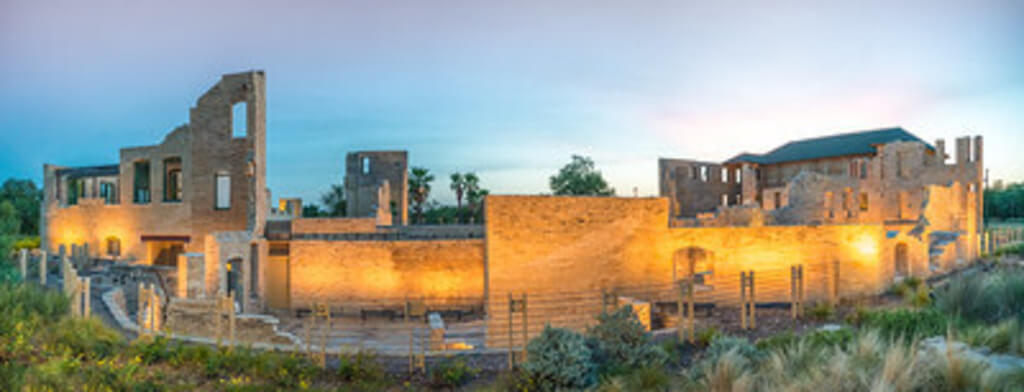
The Hot Wells Hotel is said to have hosted the crème de la crème of society during its time.
It was a luxurious resort known for its hot bath.
In 1892, a medical institution drilled into an aquifer leading to the discovery of an Edward well that was 104 degrees.
Back then, the belief was that; water containing sulfur could heal all wounds.
People believed the water from the Edward well had healing powers.
Charles Scheuermeyer capitalized on this belief, claiming the waters would cure just about anything, including rheumatism, skin diseases, and blood poisoning.
The Edward Well inspired the name Hot Wells Hotel and Spa.
It soon became popular.
Multitudes would go to the hotel for the hot bath and spa.
There were constant fire outbreaks which shut the hotel down.
Residents of Dan Antonio say the hotel ruins are home to ghosts of past guests who did not want to let go of the luxury the hotel offered.
There have been reports of sightings of a woman staring out of a window at night.
Several individuals have also stated that they have felt the presence of someone roaming the grounds during their tour.
Address: S Presa Street, San Antonio, Texas 78214, United States
2. The Saint John Seminary (Catholic School’s Silent Decay)
The Saint John Seminary was built as a catholic boarding school for young, troubled boys over 100 years ago, in the 1890s.
Eventually, the Society of St. John converted it into a Seminary where students from all over the country would come to study theology and philosophy.
It thrived for several years, training thousands of boys and producing well-seasoned theologians.
The Seminary was renovated over the years to accommodate the growing number of students.
Regrettably, it shut down and was occupied by the Patrician movement, a program focused on drug abuse and its effects, till 2011.
It is now a silent witness to the hopes and aspirations of the young men who studied there.
The Seminary is now in despair and decay, occupied by homeless people.
Address: San Antonio, Texas 78210, United States
3. The Pro Plus Flour Mill (Historic Flour Mill’s Fate)
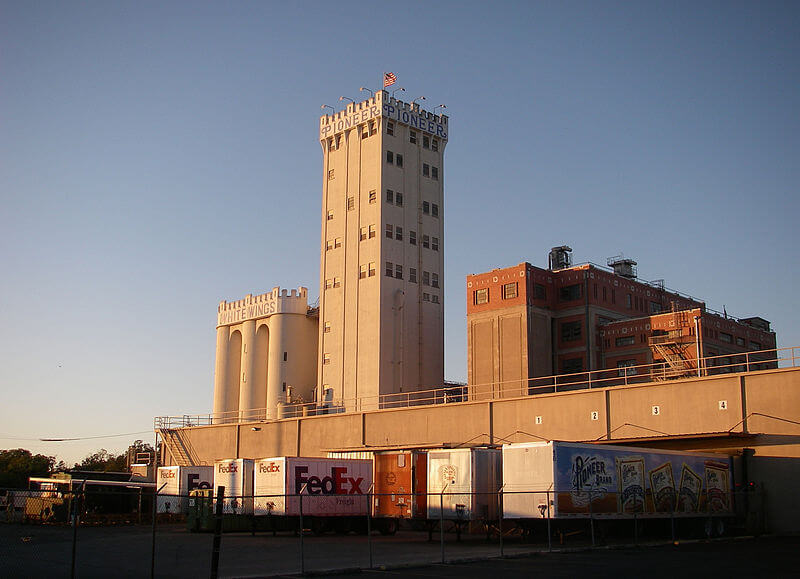
Also known as Liberty Mill, it began operations in 1916.
It was one of the first mills in San Antonio.
At that time, the mill could only sell flour to the locals.
There were no trains to transport the goods from San Antonio to other parts of the country.
When trains were made available, they began to sell their flour to locations all over the country, making room for an increase in profit as well as for the expansion and renovation of the mill.
The mill was eventually abandoned and has been so for decades, a true testimony of the urban blight.
There have been reports that the flour mill would be torn down and renovated into residential apartments.
Before this happens, be sure to check it out.
Address: 129 E Guenther St, San Antonio, TX 78204, United States
4. The Devil’s Den (Leon Creek Greenway)
The Devil’s den is now a trail for mountain biking.
It did not start as a trail.
No one knows what the structures were used for because there are no public records.
Some locals believe it was a grain elevator used to haul gravel.
Others say it used to be the ground of some old folk’s home that got burnt overnight.
No one knows the exact history of this location.
It became popular in the 1990s when a Satanist cult worshipped there.
Some ritualistic murders happened there.
Perhaps this is where the phrase ‘Devil’s Den’ comes from.
Rumors of this place would soon take a darker turn.
In 1997, the remains of two missing teenage boys, Eric and Christian, were discovered there.
They were students at the Holmes High School nearby and went missing for days before local kids found the bodies.
Some people believed it was an act of ritual sacrifice by the Satanists.
The City cleared out the location and turned it into a trail.
Address: Ingram Road, Northwestern, Leon Valley, San Antonio, Texas 78238, United States
5. Bexar Juvenile Detention Center (Cold Past of Detention)
This center was a nursing home called the poor farm.
A few years later, it was designated a juvenile detention center for boys.
While it was operational, it was considered a cold and cruel place.
Parents told horrible stories of the center to teach their children to behave; it was not a place any child would want to go.
It was a place of death and paranormal activities.
The first recorded death on the premises was on January 26, 1925.
A 14-year-old inmate, Alfred Gracia, was found half dead by an attendant.
The attendant took him to the hospital, and doctors discovered traces of rat poison in his blood.
Alfred had committed suicide.
Tragedy would strike again in 1933 when an inmate, 21-year-old Jesus Saumudio, was indicted for murder.
Saumudio confessed and pleaded guilty to the murder of another inmate, Charles Watson.
He admitted to hitting the deceased over the head with an iron bar during an argument and later dumped Charles’s body in a creek a mile away from the juvenile home.
These and many other deaths in the juvenile center are why people believe it harbors evil.
Many brave explorers have given accounts of a sudden drop in temperature, screams, and hurried footsteps within the abandoned center.
Address: 600 Mission Road, San Antonio, Texas 78210, United States
Also see our article on Castles in Texas.
Abandoned Places In Gregg County, East Texas
1. Omega (Vanished 1870s Community)
The Omega community dates as far back as the 1870s.
It was a part of Upshur County until Gregg County stood on its own in 1873.
There were no signs of an intention to have a permanent community or plans for growth and expansion.
The community was merely a cluster of homes with a few stores.
Residents did not make plans for a commercial area or town center.
The people came together to build a school for the Omega community in 1930; it also served Upshur County.
It was the heart of the community.
The school shut down after World War II.
In the wake of the war, the population of this community began to dwindle.
By the 1960s, maps did not have the location of the community.
Address: Eight Miles Northeast of Longview and Southeast of Gilmer along Highway 259
2. North Chapel (Ghost Town on a Dirt Road)
When you think of a ghost town, do you imagine a dry and barren land?
Or abandoned buildings down the sides of a dirt road?
Perhaps you imagine a place with tumbleweeds?
North Chapel is often called a ghost town.
There are no official records of when people first settled in the town.
People say the first settlers migrated to North Chapel sometime before the 1900s.
What started as one or two families looking for new lands to settle on soon grew to include a store, a church, and a school.
The total population of the town is unknown.
Although small, this thriving town managed to survive the Great Depression.
One thing common to almost all small towns is the lack of abundant or satisfactory job opportunities.
North Chapel was not different.
Post-war job opportunities caused a lot of settlers to move to other towns.
Slowly, the death of the town began until all former residents had moved to places that offered better jobs.
Certain buildings from the town’s thriving era still exist today: the North Chapel church and a few houses.
Address: Camp County, Texas, USA
3. Camden (Walling’s Ferry)
Camden is one of the earliest established communities in Gregg County.
It was located close to the Sabine River and existed between the 1840s and 1872.
During its early years, the town had its zip code.
Residents referred to it as Camden or Walling’s Ferry, both of which were acceptable to the postmaster.
Camden town grew around a crossing of the river, John Walling’s Ferry.
One major downside is that the bottom of the river made it easy for mosquitoes to breed.
It had a lot of adverse effects on the growth of the town as well as on settlers.
Mosquito bites are very unpleasant; it is also the cause of malaria.
Camden settlers were constantly under the threat of these two things.
After several deaths, the townfolk began to move to higher grounds.
It became a ghost town in the mid-1870s.
All that remains of this town is the Camden cemetery.
Address: 10 miles south of Longview, Easton, Texas
4. Danville (Railroad Bypassed Settlement)
Settlers from Kentucky established Danville in the late 1840s.
The homesick settlers named the settlement after their former residence.
They built several structures in the following years: the Gum Springs Presbyterian Church, built in 1848, Rabbit Creek post office, built in 1850 and later renamed the New Danville post office in 1852; the New Danville Masonic Lodge, also built in 1852.
New Danville thrived with the opening of businesses and stores.
Due to the International-Great Northern Railroad’s decision to bypass Danville in favor of Kilgore, this growing town’s expansion began to slow down in the 1870s.
Residents and businesses began to flock towards the new railroad, where they would make more profit.
The result was a decrease in population.
Consequently, the growth of this town became stunted to the extent that the residents stopped referring to the town as ‘New’ Danville.
Danville was eventually closed down.
All that’s left of the town is the Danville cemetery.
Address: Danville Cemetery County Road 2452 Kilgore, TX 75662
If you liked this article, you may also like to read about the best Attractions, Hidden Gems, and Places to Visit in Texas.
Looking beyond Texas? Check out our article on Abandoned Places in New York and Florida.
